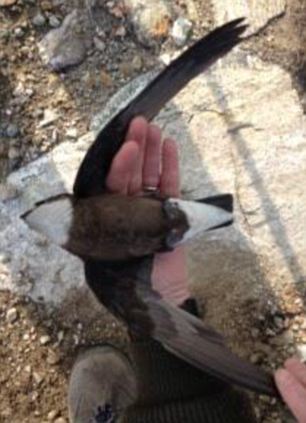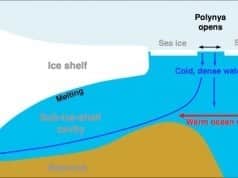The Royal Society for the Protection of Birds sacrifices today’s birds in the name of fighting tomorrow’s climate change. Not only does it provide cover for the wind industry, it cashes its cheques.
In case you missed it, this week a tragedy took place on an island northwest of the Scottish mainland.
It has been 22 years since a white-throated needletail has been seen in the UK. On Monday, two birdwatchers spotted one on the Isle of Harris, which is part of an island chain known as the Outer Hebrides.
Word spread and soon dozens of enthusiasts, reportedly from all over the country, hit the road, eager to witness this natural marvel with their own eyes.
On Wednesday, however, in the presence of approximately 40 bird watchers, the needletail flew into a wind turbine and was killed instantly.
It is more than a little ironic that a charity known as the Royal Society for the Protection of Birds (RSPB) takes hundreds of thousands of pounds from the wind industry – having conveniently convinced itself that the biggest threat to the bird population isn’t thousands of wind turbines in the here and now, but speculative climate change decades hence.
As James Delingpole explained recently, the RSPB appears to have been taken over by “green zealots.” Moreover, it looks as though the wind industry is going to a rather a lot of trouble to hide the true number of bird deaths – and to prevent rigorous bird mortality studies from being carried out.
If it weren’t so tragic it would be amusing to notice that Delingpole reports the following:
RSPB conservation director Martin Harper.added that a 2004 study, published in Nature, said that 15 to 37 per cent of species were ‘committed to extinction’ by 2050 unless immediate action was taken to tackle climate change.
That study is known as the Chris Thomas paper. As I explained some time ago, it is a pile of rubbish – see the explanation beneath the subheading The Notorious Thomas Paper a third of the way into this blog post.
Six months after it appeared, Nature had published not one, not two, but three responses to that paper – all of which challenged its conclusions. Daniel Botkin, one of the pre-eminent biologists of the 20th century, has called it “the worst paper I have ever read in a major scientific journal.” Other scholars have also trashed it.
It beggars belief that a charity with the phrase protection of birds in its name would, years later, continue to cite that particular piece of research in order to justify bird-chomping wind farms.
And let us not forget that, when birds die accidentally and incidentally on oil company property, oil companies get fined $7,000 per fatality. Government officials declare these fines “a great win for the environment.”
So far I’ve seen no indication that anyone is going to be held accountable for the demise of that rare needletail.
See Also:
- Twitchers flocking to see rare bird saw it killed by wind turbine
- Rare bird last seen in Britain 22 years ago reappears – only to be killed by wind turbine in front of a horrified crowd of birdwatchers
- Horrified birdwatchers see rare white-throated needletail fly into wind turbine
The BishopHill blog recently highlighted a special edition of a magazine that examines the impact of wind turbines on the Scottish landscape. Few of us appreciate the scale of these projects. Click here for the 32-page magazine. The image at the top of this post is from the back cover.






